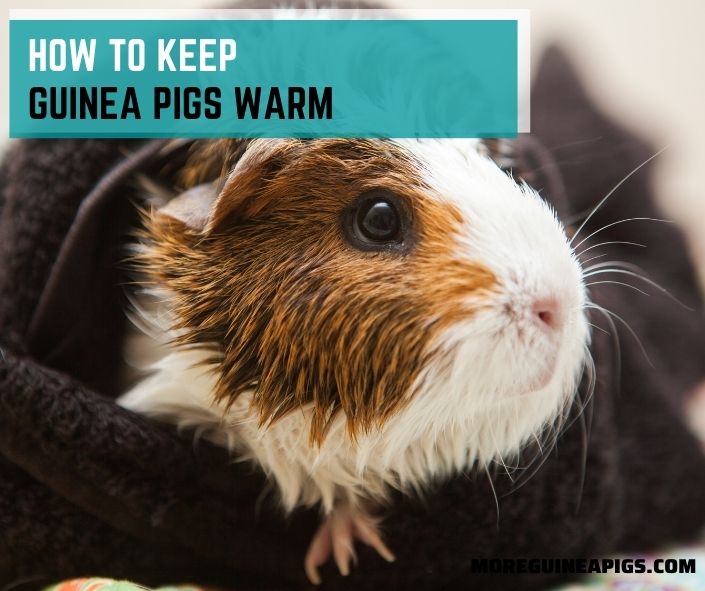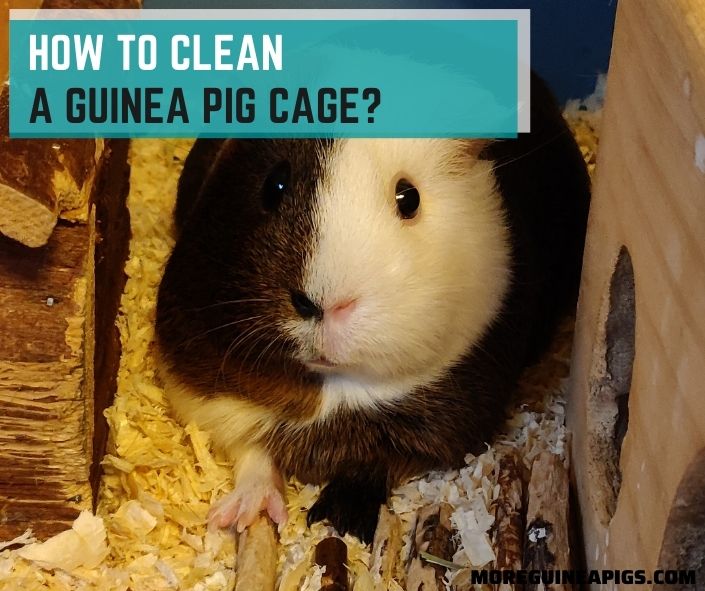How to Keep Guinea Pigs Warm
In keeping guinea pigs happy and healthy, the issue of keeping them warm especially in cold weather is crucial. Many pet owners are curious on how to keep guinea pigs warm in different situations.
This article analyzes some of the creative ways to keep your guinea pigs from freezing in winter, even in the event of unanticipated occurrences like power outages.
How Do You Know If Your Guinea Pig Is Cold
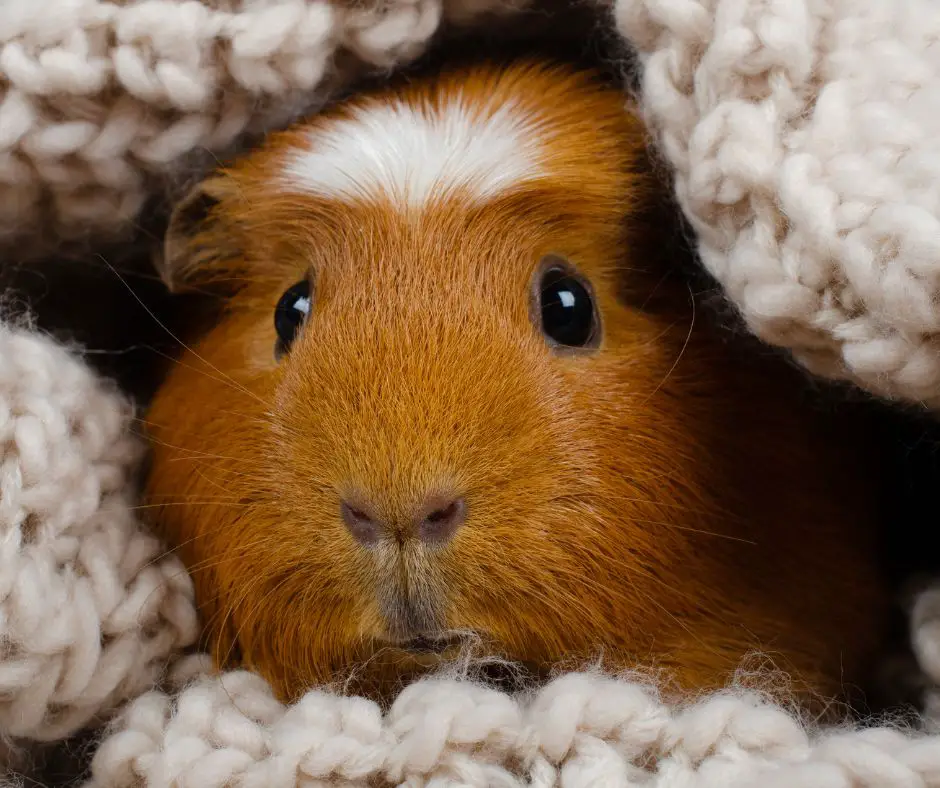
Temperatures below 16 degrees celsius are considered too cold for a guinea pig, and it may be necessary to make changes in its living environment to prevent it from getting sick.
When a guinea pig gets cold, it is likely to shiver from chills since there will be less blood flowing to its coat to keep it warm and comfy.
Another common sign that would communicate that the pig is chilly is huddling or curling itself up. This is often an attempt to conserve body heat by reducing its bodily exposure to the environment.
How To Keep Guinea Pigs Warm During Winter
Whether they are indoors or outdoors, guinea pigs need to be kept warm to prevent them from catching diseases. During winter, this becomes even more important.
Generally, the steps for keeping cavies warm are the same whether they are indoors or outdoors. However, you may need to use a few more insulation materials in outdoor locations compared to indoor settings.
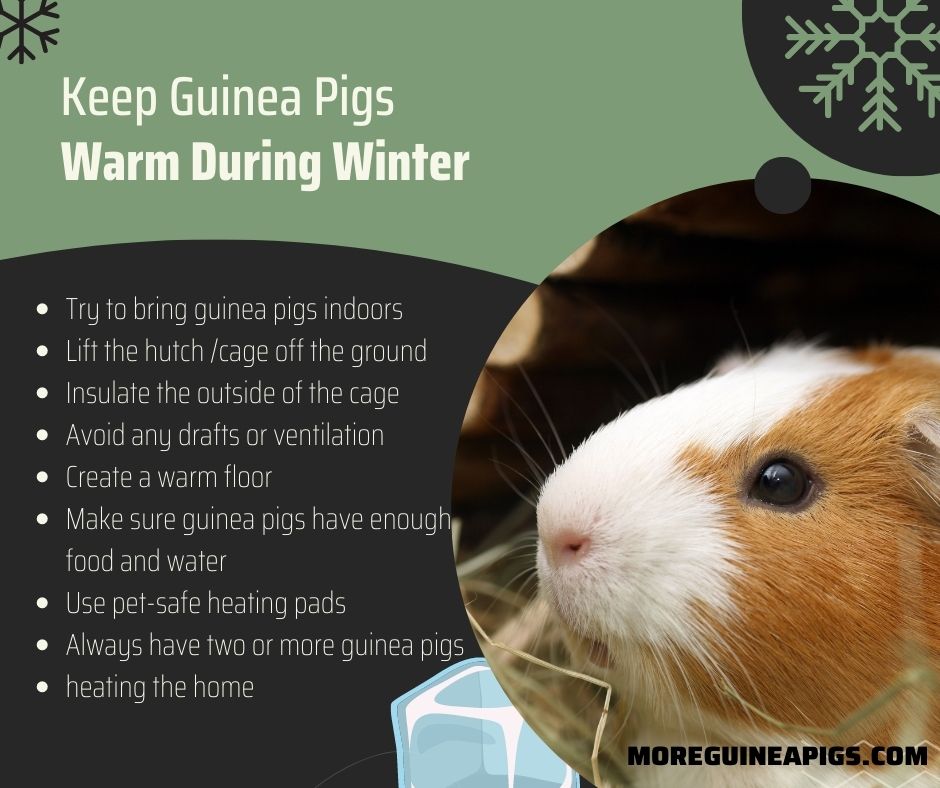
Try To Bring Your Guinea Pigs Indoors
Over winter, temperatures are likely to dip significantly. For this reason, the first logical step would be to bring the guinea pigs indoors if there is sufficient room for them.
There is more exposure to the elements outside, and this may make the process of keeping them warm a little more daunting.
In case they are already indoors, location of the pig’s cage is also important. You may need to ensure that the cage is not placed in the direct line of cold streams of air which may be more pronounced in winter.
Moving the cage to more central locations within a room ensures that it is safe from the cold air that seeps beneath door and window frames.
The next steps for keeping your guinea pig warm are applicable to both indoor and outdoor settings.
Lift the Hutch/Cage Off the Ground
Lifting the cage from the ground serves to prevent moisture from seeping through it and dampening the pet’s living environment.
Raising it above the ground also enables free flow of air through it, ensuring that the guinea pigs are in a safe setting.
This is one of the easiest steps you could take to increase the warmth within the environment in which your guinea pig lives.
Insulate the Outside Of the Cage
Insulating the exterior of the cage will serve to block cold winds, moisture and breezes from reaching the guinea pig.
A sturdy waterproof covering may be adequate in this regard. You could also use an old, warm rug or carpet for the same function.
Nevertheless, it is important to ensure that the cage still has sufficient flow of air so that the pets do not suffocate.
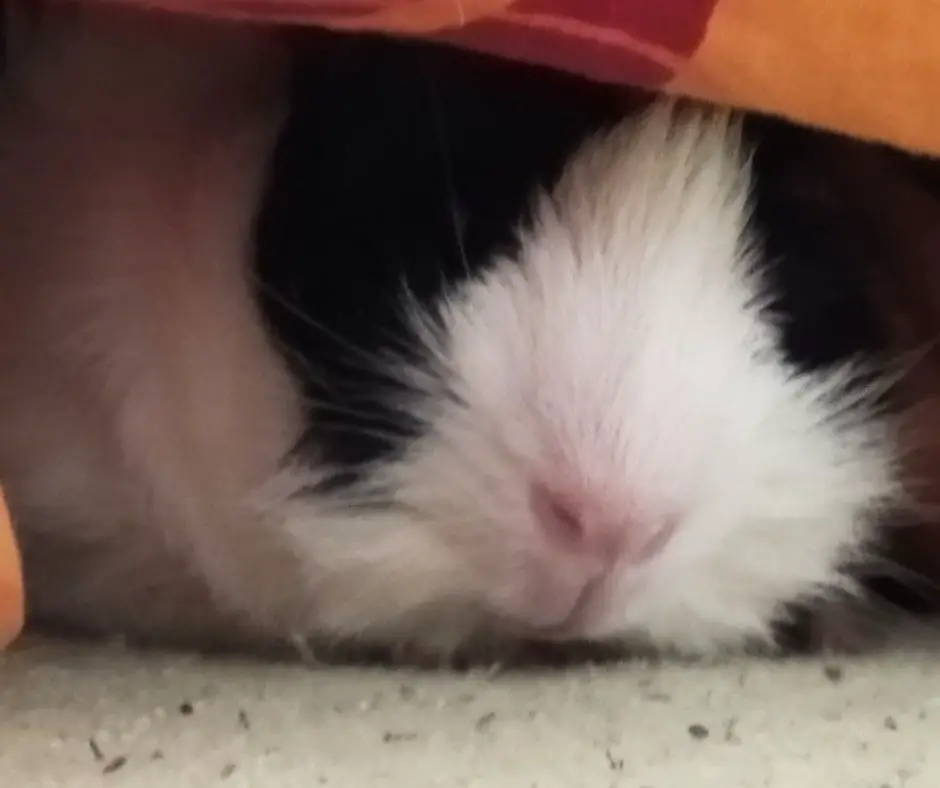
Avoid Any Drafts or Ventilation
Keeping the doors shut helps to ensure that the piggies are not exposed to cold unnecessarily. Leaving them open may well beat the purpose of having moved the cage indoors.
You may also position the cage away from drafts or ventilation to avoid the paths of streams of air.
Furthermore, using blankets and old carpets to seal openings under and above any vents or spaces is advisable, especially if in an area with a lot of wind.
If the hutch has to stay outdoors, insulating its top and areas around the sides is necessary to keep the pets safe from the elements. You can gauge the level of insulation necessary based on the temperature readings.
Also read: Guinea Pig Temperature: Everything You Need To Know
Create a Warm Floor
Insulating the floor of the cage is yet another important way of keeping your piggies dry and warm. This helps them retain their bodily heat as a cold floor may conduct heat away from their bodies.
You may achieve such insulation by adding blankets and towels, and fleece materials are the most favored for this.
If you already had blankets in their cage, winter may necessitate thicker bedding on the floor, with 2 to 3 inches being ideal. Shredded paper or hay may also be used to add to this thickness.
Aside from providing thick, floor bedding, it is important to keep the cage dry by changing soiled blankets.
You should also encourage the piggies to remain active by not obstructing their exercise area. Small hutches or a tunnel inside the cage will provide a convenient platform for play and exercise.
Activity adds to the cavy’s overall body heat.
Make Sure Your Guinea Pigs Have Enough Food and Water
Maintaining a sufficient supply of food and water for the pets is also important during winter. You want to ensure that the piggies are as healthy and strong as possible, so a diet rich in hay, veggies, fruit and clean water is important.
Proper food provides the energy needed to warm up the body of the guinea pig internally. When they are hungry, metabolism which also contributes to body heat may significantly be slowed down.
Also read: What Can Guinea Pigs Eat? A-Z Food List
Use Pet-Safe Heating Pads
Special heating pads for pets could also come in handy in your endeavor to ensure that your pets are kept warm and safe. Be careful not to use human heating pads as these may offer excessive heat which will be uncomfortable to guinea pigs.
A pet-friendly heating pad, when properly heated in a microwave, provides subtle heat for your cavy in a safe way. There are a number of such brands in the market. The Pet Fit for Life Snuggle Soft Cooling and Microwave Heating Gel Pad, for instance, is worth checking out.
K&H Pet Products Thermo-Peep Heated Pad Tan Petite 9 X 12 Inches
Always Have Two or More Guinea Pigs
Having two or more guinea pigs is not only necessary for ensuring that they keep each other company, but also helps them stay warm in cold weather. When they huddle together, they get to share their bodily heat for more comfort.
Also read: Do Guinea Pigs Need Cage Mates? 4 Steps to Introduce New Guinea Pigs
Heating the Home
Even if the guinea pigs have their cage located indoors, the actual positioning of the hutch is very important. Avoid placing the cage near drafters or vents which may let in cold streams of air.
You can also use a heater to increase the room temperature to ensure that the piggies have maximum comfort.
Nevertheless, it is important to remember that when the heat is extreme, the pets may suffer a heatstroke. A thermometer in or near the cage will help you ensure that you maintain just the right temperature for your pets.
Digital Thermometer
Final Sentences
Guinea pigs may suffer hypothermia or other ailments related to exposure to cold temperatures if sufficient measures are not taken to keep them warm and contented.
In the winters especially, you ought to ensure that temperatures do not go lower than 16 degrees celsius, as this is the common threshold at which they start feeling chilly.
Failure to keep the piggy warm enough may not only result in a sour and dull mood, but may as well cause its death.
Depending on the level of exposure and intensity of the cold, a guinea pig may well endure in mildly chilly conditions.
However, long hours of exposure in conditions falling below 16 degrees celsius will gradually take a toll on it and hypothermia may result.
For younger guinea pigs, more caution is necessary to prevent them from freezing as their tolerance for cold is often still low.
Pet Fit For Life Snuggle Soft Cooling and Microwave Heating Gel Pad
